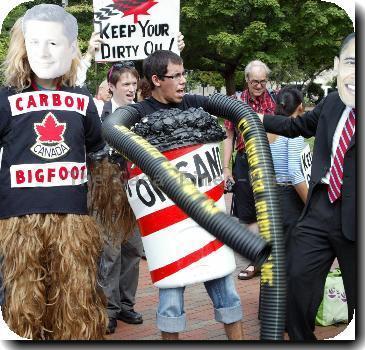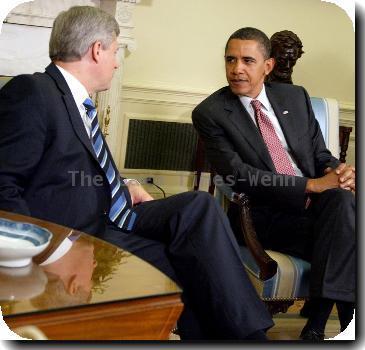No jawboning these bankers; Obama listens and offers help to community bankers
By Jim Kuhnhenn, APTuesday, December 22, 2009
Community bankers get Obama’s soft touch
WASHINGTON — This time, no fat cats.
President Barack Obama took his plea for more small business lending to community bankers Tuesday, but his prodding was far gentler than it was with high finance CEOs last week.
The president offered to help ease regulation that bankers say has restricted lending. He praised the small bankers as pillars of their communities. And he listened sympathetically to their pleas for easier access to capital.
“It’s fair to say that most of these community banks were not engaged in some of the hugely risky activities that helped to precipitate the financial crisis,” Obama said at the conclusion of the meeting with 12 regional bankers and top administration officials.
That’s a different tone than last week when he famously called top bankers “fat cats” in a television interview and then told them in a White House meeting that they had a responsibility to make “an extraordinary commitment” to help rebuild the economy.
No wonder. Small bankers have not aggressively fought central elements of his sweeping financial regulation proposal, they don’t make as good a populist target as Wall Street’s banking chiefs and they are essential to Obama’s goal of spurring small business lending.
“The administration recognizes that, truly, community banks are in a different business than the megafirms and the megabanks,” said Mark Schroeder, chairman and CEO of German American Bancorp Inc., of Jasper, Ind., and a participant in the meeting.
The bankers told Obama their experiences where good loans weren’t financed because regulators demanded banks hold more capital and downgrade existing loans. Privately and then later before reporters, Obama acknowledged that the regulators are independent agencies but said his administration is looking at “possibilities to cut some of the red tape.”
“In some ways the pendulum may have swung too far in the direction of not lending,” the president said.
The meeting came as the administration is trying to forge a program that would give community banks access to about $30 billion in low interest money from the government’s $700 billion Troubled Asset Relief Program.
Small bankers have been loath to accept TARP money, however. They say they fear the reporting requirements that come with the money as well as any restrictions on compensation and lending that would be attached.
“Right now you couldn’t make it cheap enough for them to touch it,” said Camden Fine, the president and CEO of the Independent Community Bankers of America.
That poses a dilemma for the White House. Obama advisers see small business expansion as an answer to the high unemployment that has hurt the president politically and is likely to linger well into next year’s congressional election season.
In pushing banks, the administration is trying to reverse a troubling trend. According to the Federal Reserve, loans by the nation’s 8,000 banks fell 8 percent to $6.7 trillion in the past year, and some analysts expect them to keep falling at least through next year.
James MacPhee, president of Kalamazoo County State Bank in Schoolcraft, Mich., said using bailout money is “problematic” for banks, but that banks facing regulators’ demands to increase capital might not be in a position to turn it down.
Expanded Small Business Administration loans and new capital injections would go far to increase lending by community banks, said Diane Casey-Landry, chief operating officer with the American Bankers Association. She said banks can’t access the long-term capital — also known as “patient capital” — they need as a bridge before loans and other assets regain their value.
“If we could find a way to get patient capital into the banks and let them work through their problems, it’s going to be a win-win,” she said
In their meeting, Obama also stressed the importance of updating financial regulations and creating a consumer financial protection agency. The prospect of regulations and oversight from a separate consumer agency has driven much of the industry opposition to the proposed overhaul.
But a House-passed version of the legislation contain provisions that have eased community bank objections to the idea.
For example, banks with assets of less than $10 billion will not have to undergo a separate bank examination by a proposed consumer protection agency. Large banks would have to submit to such a review.
Small banks also won a major victory with the passage of an amendment that changes the math for how much banks pay into the Federal Deposit Insurance Corp.’s fund that insures bank deposits. Fees would be based on banks’ assets rather than their deposit bases. Big banks would pay a lot more, since they hold relatively less money in deposits.
These nods to small banks created a rift between large financial institutions and community bank organizations. The American Bankers Association, which represents both small and large banks, last week sent an e-mail to its members complaining that the Independent Community Bankers of America had not done enough to alter the House financial regulation bill.
“For years, essentially the Wall Street banks and the big firms pretty much held sway in Washington policy circles,” Fine said. “The shoe is sort of on the other foot now.”
Associated Press writers Daniel Wagner and Ben Feller contributed to this report.
Tags: Barack Obama, Community And Neighborhood Groups, Government Regulations, Industry Regulation, North America, Social Groups And Organizations, United States, Washington



